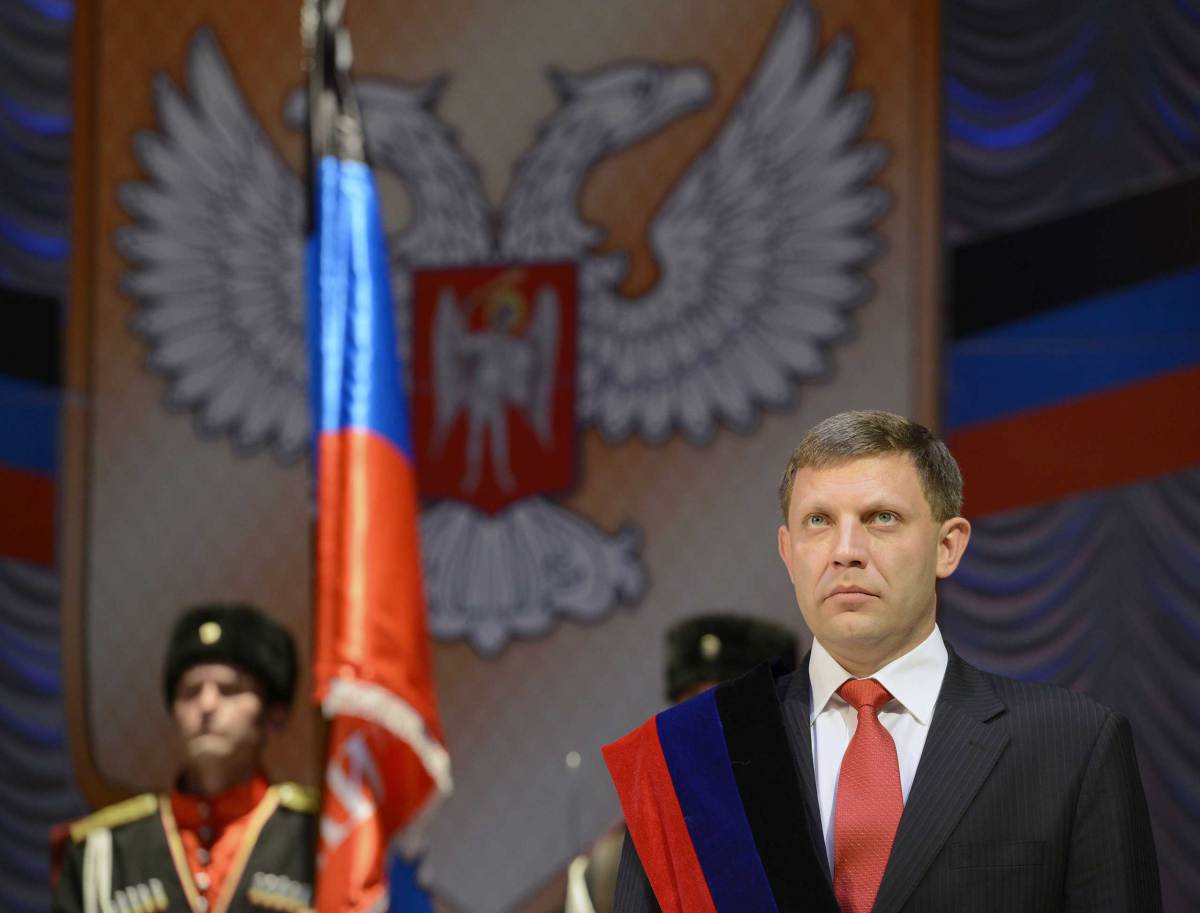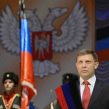
Social and Political Trends in the Russian-Controlled Donbas
Publication: Eurasia Daily Monitor Volume: 11 Issue: 197
By:

The unrecognized “people’s republics” of Donetsk and Luhansk (“DPR,” “LPR”) elected would-be presidents and legislatures on November 2, in territories seized from Ukraine (see accompanying article). The decision to proceed with these elections came undoubtedly from Moscow and it signifies (inter alia) a temporary suspension of President Vladimir Putin’s “Novorossiya” (“New Russia”) project.
Putin is not known to have mentioned this term publicly since August 29 (in a public message to “Novorossiya’s” forces advancing into Ukraine’s Donbas—eastern Ukrainian region including the provinces of Luhansk and Donetsk) and August 31 (publicly proposing to Ukraine and “Novorossiya” to negotiate about “Novorossiya statehood” in Ukraine’s east) (Interfax, August 29–September 1).
The Donetsk and Luhansk “people’s republics” were set up by referendum in May on parts of those two Ukrainian provinces. The “DPR” and LPR” were supposed to become Novorossiya’s nucleus. They joined together in a “Novorossiya federation” with its own parliament, embryonic executive authorities, and proselytizing activities, targeting eight provinces in Ukraine’s east and south. Russian television and other resources propagandized Novorossiya with maximum intensity, probably setting the stage for military operations beyond Donbas. However, Ukrainian forces contained and then rolled back the Russian and local proxy forces; ad hoc political coalitions stabilized the situation in the vulnerable provinces; and ultimately, the anarchy and criminality of “Novorossiya” forces in “DPR-LPR” drained any support they might otherwise have gathered beyond the ground already seized in Donbas.
The elections just held in the Donetsk and Luhansk “people’s republics” soft-pedalled the Novorossiya theme. The “federative parliament” and its propaganda had disappeared by September. Moscow handlers undoubtedly made sure of this. Apparently, the Kremlin determined that it needed a pause to clean up, institutionalize and consolidate the existing “DPR-LPR” foothold.
Paramilitary commanders on the ground and ultranationalist circles in Moscow complained through their internet networks that the Kremlin was abandoning the Novorossiya project. On October 23 the head of Russia’s presidential administration, Sergei Ivanov, obliquely addressed those complaints. He offered a downscaled definition of Novorossiya, confined to the existing “DPR-LPR.” Ivanov implied that these need to be consolidated (Komsomolskaya Pravda, October 23).
These elections mark a regime change in the Russian-controlled part of Donbas, more drastic than Kyiv’s regime change; and contrasting with the political continuity in the Ukrainian-controlled parts of Donbas. Where Russia and its proxies hold sway, they have destroyed Ukraine’s Party of Regions in its erstwhile strongholds. Moscow’s television channels, Russia’s local proxies in Donbas, and the Novorossiya movement all inveighed against Ukraine’s “oligarchs” and their Party of Regions. The latter may have been linguistically russified, and lacking a Ukrainian identity; but (as a party) it never identified with the Russian nation, state, or ideology. It was an a-national party that actually blocked any attempts at “Russian self-organization” in Ukraine’s east and south.
The pro-Russia movement in Donbas removed most of the economic-administrative nomenklatura associated with the Party of Regions from power. It replaced it with an entirely new brand of political activists: younger, minimally educated, of working-class or petty-business background, with militarist predispositions, often violently-inclined, and embracing Greater-Russia nationalism in one version or another. In Ukrainian-controlled parts of Donbas, by contrast, a rump Party of Regions, renamed as Opposition Bloc (with the old faces) took first place in the October 26 parliamentary elections, even in the districts liberated from “DPR-LPR” control. As Vitaliy Portnikov suggests, had Russia allowed Ukraine to regain all of Donbas, the Opposition Bloc could have attracted many more votes there (RFE/RL, November 1).
Ukraine’s Donetsk and Luhansk provinces had an estimated combined population of 6.5 million in 2013 (4.3 million and 2.2 million, respectively). The majority ethnicity is Ukrainian, but the majority language is Russian, owing to Soviet-era russification and the continuing impact of Russia’s mass media. The russification policy now seems set to resume and intensify in the “DPR” and “LPR.” These control somewhat more than one half of the combined population (primarily the urban agglomerations). This makes the “DPR-LPR” at least four times as populous as the combined populations of Transnistria, Abkhazia, South Ossetia, and Karabakh. Meanwhile, the Ukrainian government controls somewhat more than one half of the combined land area (mainly the countryside) of the Donbas region.
In the last census (2001) in the Donetsk province, 57 percent of residents identified themselves as ethnically Ukrainian, but only 24 percent as Ukrainian-speakers; whereas 38 percent of residents declared themselves ethnic Russian, but 75 percent of residents as Russian-speakers. In the Luhansk province, 58 percent identified themselves as ethnically Ukrainian, but only 30 percent as Ukrainian-speakers; whereas 38 percent of residents declared themselves ethnically Russian, but 69 percent of residents self-identified as Russian-speakers, according to the last census (Russkiy Yazyk v Ukraine, Dannyie Perepisi 2001 goda, aratta-ukraine.com via Unian, April 2, 2014).
Donetsk and Luhansk are the only two Ukrainian provinces (oblasts) in which the Russian language predominates. While most ethnic Ukrainians here became bilingual, or lost their own native language and adopted Russian, the ethnic Russians, as a rule, remained monolingual. As a net result, the language of the minority ethnicity became the lingua franca in these two Ukrainian provinces. These historic distortions confused some influential outside observers into believing that the Russian language would need protection and some special status in this part of Ukraine, whereas, in fact, the Russian language reigns supreme here.
Ukrainian is the state language throughout Ukraine, including the Donetsk and Luhansk provinces until now. It is likely, henceforth, to lose this status, either formally or de facto. Russian, meanwhile, has all along been the hegemonic language in Donetsk and Luhansk de facto, also enjoying official status on the provincial (oblast) level de jure, on par with the Ukrainian language, under the law on regional languages, in force since 2012.
The Ukrainian language and culture face risks to their very survival in the “DPR” and “LPR” outside Ukraine. The “people’s republics’ ” newly-elected authorities are aligned with Russia’s “Novorossiya” and “Russian World” projects. The new local leaders have seized power on a wave of Russian national irredentism with elements of Soviet revivalism. The new authorities are likely to crowd out the Ukrainian language systematically from the public sphere, and to hound out the remaining Ukrainian intelligentsia, except perhaps for the bravest among them. Transnistria’s authorities have set the example in suppressing the Moldovan identity; Crimea’s new authorities follow that example in their handling of the Ukrainian and Tatar identities. Only a few months ago, Moscow was claiming that the Russian language in Ukraine’s east needed protective mechanisms such as “federalization.” In fact, it is the Ukrainian language that will need some survival help in Ukraine’s Russian-occupied territories.




